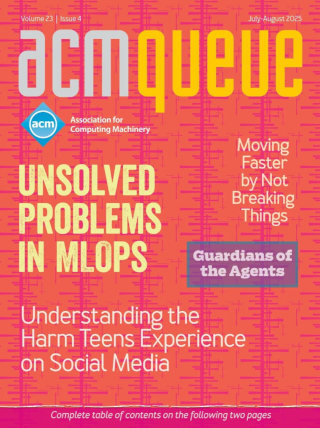
The Story of the Teapot in DHTML:
It’s easy to do amazing things, such as rendering the classic teapot in HTML and CSS.
Before there was SVG (Scalable Vector Graphics), WebGL (Web Graphics Library), Canvas, or much of anything for graphics in the browser, it was possible to do quite a lot more than was initially obvious. To demonstrate, we created a JavaScript program that renders polygonal 3D graphics using nothing more than HTML and CSS. Our proof-of-concept is fast enough to support physics-based small-game content, but we started with the iconic 3D "Utah teapot" because it tells the whole story in one picture. It’s feasible to render this classic object using just regular DIV elements, CSS styles, and a little bit of JavaScript code. This tiny graphics pipeline serves as a timeless demonstration of doing a lot with very little.
Swamped by Automation:
Whenever someone asks you to trust them, don’t.
So your group fell for the "just install this software and things will be great" ploy. It’s an old trick that continues to snag sysadmins and others who have supporting roles around developers. Whenever someone asks you to trust them, don’t. Cynical as that might be, it’s better than being suckered.
The Evolution of Web Development for Mobile Devices:
Building Web sites that perform well on mobile devices remains a challenge.
The biggest change in Web development over the past few years has been the remarkable rise of mobile computing. Mobile phones used to be extremely limited devices that were best used for making phone calls and sending short text messages. Today’s mobile phones are more powerful than the computers that took Apollo 11 to the moon with the ability to send data to and from nearly anywhere. Combine that with 3G and 4G networks for data transfer, and now using the Internet while on the go is faster than my first Internet connection, which featured AOL and a 14.4-kbps dialup modem.
How Fast is Your Web Site?:
Web site performance data has never been more readily available.
The overwhelming evidence indicates that a Web site’s performance (speed) correlates directly to its success, across industries and business metrics. With such a clear correlation (and even proven causation), it is important to monitor how your Web site performs. So, how fast is your Web site?
FPGA Programming for the Masses:
The programmability of FPGAs must improve if they are to be part of mainstream computing.
When looking at how hardware influences computing performance, we have GPPs (general-purpose processors) on one end of the spectrum and ASICs (application-specific integrated circuits) on the other. Processors are highly programmable but often inefficient in terms of power and performance. ASICs implement a dedicated and fixed function and provide the best power and performance characteristics, but any functional change requires a complete (and extremely expensive) re-spinning of the circuits.



